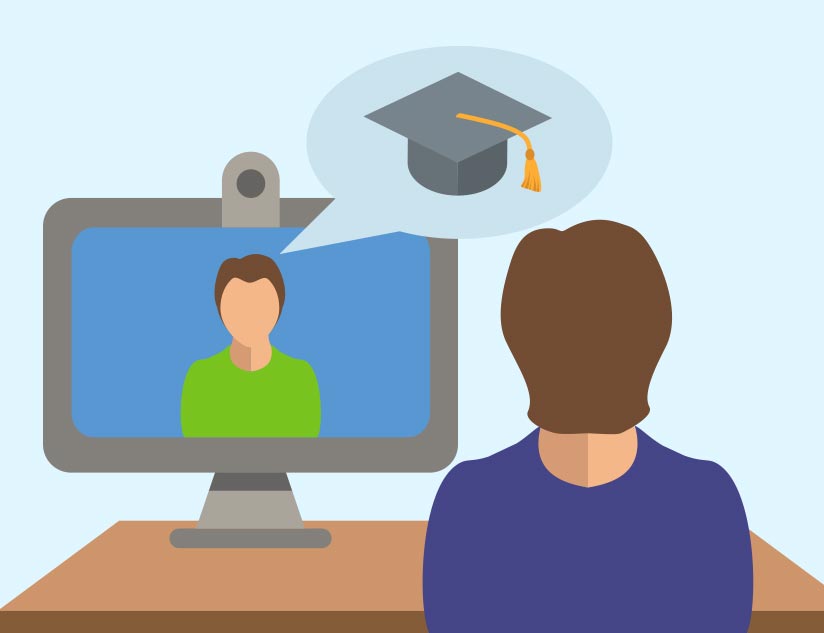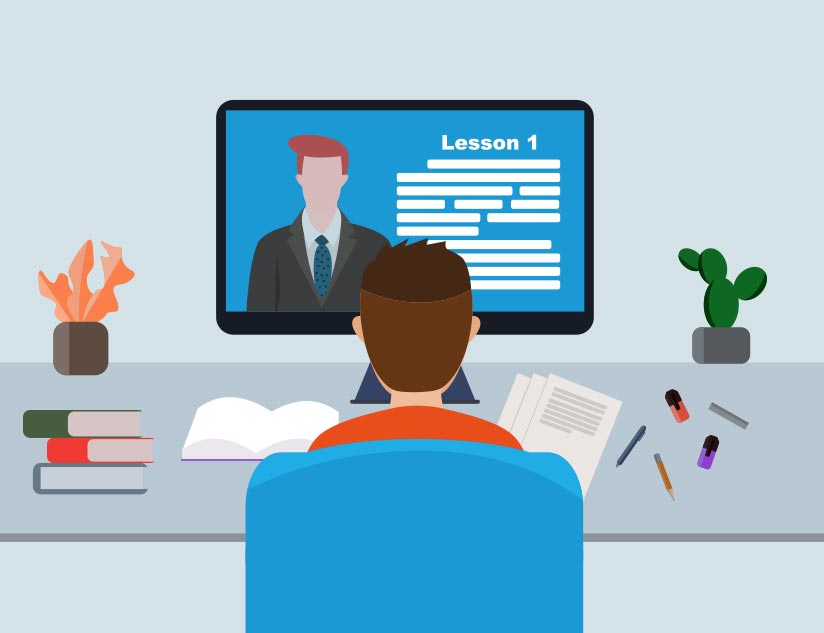Digital Access is Not Digital Equity
April 12th, 2022
In the last two years, people have adapted to new ways of living and working. They have seen an acceleration of several trends, from the rise of digital learning to the surge in digital transformation across sectors and industries. In the field of education, however, one upsetting trend was the growth of the digital divide.
The digital divide refers to the gap between those who have access to technology and those who do not. It is estimated that one-third of the world’s school-age children (or 463 million students) did not have access to remote learning during the pandemic. This adversely impacted digital equity among students, which is often confused with digital access.
Digital inequity exists wherever people lack access to technology, training, skills, and experiences. But, even if they can somehow access technology, they might not have the means to effectively use the tools. It is a serious concern that knows no borders and impacts people everywhere. It hurts students in both developed and developing economies, in rural and urban communities.
Digital Inequity in Education
As more educational services and learning resources go online, the need to ensure that students can effectively use technology increases. Since the pandemic struck, the challenges to remote learning have left some students behind while others have benefited. Thus, ensuring digital equity is the need of the hour to improve the educational experience for every student.
Although remote and hybrid learning approaches have ensured continuity of education, digital equity, and learning outcomes are becoming a big concern for school districts. A recent study revealed that 59% of lower-income parents in the US admit that their children face digital obstacles in schoolwork. Even if school districts get the right hardware and offer students internet access, some students might still be at a disadvantage since they can’t use the technology properly.
If digital inequity continues to grow in education, it could lead to four major long-term consequences:
-Decreased Performance: Students from low-income households will have less access to information, which will impact their academic performance.
-Unfair Competitive Advantage: Students with access and effective means to digital resources will perform better when they enter college due to universities increasingly embracing technology.
-Convenience in Learning for a Few: Privileged students will gain access to better devices and face fewer hurdles to completing their education.
-Unequal Learning Experiences: Students belonging to low socio-economic groups will face disadvantages and will have to spend more hours achieving their learning objectives.
Barriers to Digital Equity
On the surface, it may seem like ensuring digital access may address the issue of digital inequity. However, simply handing out digital devices to students can’t serve as a solution. There are several barriers to digital equity, such as:
1. Cost and Access to the Internet and Devices
The first major issue is the price of technology today. Some sophisticated devices are priced at hundreds of dollars if you want advanced features included. Even if school districts and the government try to compensate for this, the cost of home internet or mobile data is an expense that many families cannot afford.
Also, it would be unfair to think that families who are doing well financially have equal access to resources. One study found that nearly 17 million children aged 17 or younger lack high-speed internet at home. Additionally, around 3.6 million households don’t even own a computer.
Moreover, in rural areas, internet access may be restricted by availability rather than cost. Of the 55 million students who had to suddenly shift to home-based remote learning during the pandemic, nearly 16.9 million children remained logged out from instruction because their families lacked home internet. This situation was even worse for BIPOC (Black, Indigenous, and Other People of Color) students, students from families with low incomes, and students in rural areas.
2. Parental Understanding
In some cases, even if the students can afford technology and have access to high-speed internet, their parents may cause a problem. Many parents had limited exposure to technology when they were growing up. So, they may not be able to help their children because they don’t understand how to use the digital tools themselves.
3. Educators Lack Technology-Based Skills
Another issue with digital equity is that there is a section of educators that lacks training in using technological devices. So, they cannot facilitate active digital learning for students. A 2020 GBH Education survey, in which more than 1,900 educators participated, revealed that only 66% of them were extremely confident about using digital media for teaching. Thus, there is an urgent need for an agile professional development strategy for educators.
Steps to Ensure Digital Equity
It is quite evident that digital tools are going to play a vital role in the future of education. However, digital education will remain ineffective if it cannot occur without equitable and ubiquitous access to the internet and digital tools. The COVID-19 pandemic has simply highlighted the digital inequities in education that already existed. It is now time for some serious efforts to be made to advocate for critical resources that will help students today and in the future.
Some crucial steps that can help ensure better digital equity among students include:
1. Follow the UDL Framework
The Universal Design for Learning (UDL) framework can enable educators to continually develop and evaluate digital equity strategies. It can help them not just fix but remove Information and Computer Technology (ICT) related barriers for students. Some guidelines that promote digitally equitable classrooms are:
-Providing Multiple Means of Engagement: Educators can instill information literacy skills among students by exposing them to collaborative learning communities of content experts, open educational resources, online forums, and other resources.
-Provide Multiple Means of Representation: Educators can use technologies that provide multiple language settings or can be quickly translated through browsers, plug-ins, or other tools for English language learners. It will help them promote understanding of content across languages.
-Provide Multiple Means of Action & Expression: Educators can offer flexible submission policies for assignments and provide options to submit work on paper or digitally.
2. Encourage Professional Development of Educators
Educators need to be supported via ongoing professional development. This should include racial bias training so that they can effectively create an inclusive learning environment. It will help reduce digital inequities and unlearn deficit ideologies. For instance, under the Dynamic Learning Project, technology coaches were hired in schools, due to which over 90% of educators admitted that they were better able to address professional challenges and improve student learning and engagement.
3. Collaboration between Students and Educators for an Innovative Approach
When educators develop innovative strategies (beyond the internet) by connecting with students in authentic and supportive ways, they can create a significant impact on digital inequity. For instance, some students may require access to digital assistance and technical support even after school hours, especially English learners and differently-abled students. So, educators should equip them with the right tools, regardless of whether instruction occurs remotely or in school.
4. Efforts by School Districts & States
School districts can seek help from the state government to ensure full access to digital technologies for students, especially students of color, those living in under-resourced households, students with disabilities, and those living in rural areas. For instance, San Francisco’s Digital Equity Strategic Plan for 2019-2024 was created to offer affordable internet for the entire city, digital literacy for all residents, and long-term benefits for the community at large.
5. Policy Interventions at the Federal Level
The federal government is responsible for providing sufficient funding and the coordination necessary for schools, with states and other stakeholders collaborating, to address digital inequity. It has the means to ensure that all students have equitable, affordable access to broadband and devices.
For instance, the federal government came up with the American Rescue Plan (ARP) Act of 2021 and infused billions of dollars into K-12 education. It also emphasized the importance of social-emotional learning and instructed districts and states to focus their ARP investments on enhancing learning opportunities that integrate social, emotional, and academic learning across in-school and out-of-school time. However, this cannot be a one-time effort or something that stops with the end of the pandemic. To ensure seamless digital equity for K-12 students, both the government and school districts will need to launch an ongoing effort to promote equity among different socioeconomic student groups.
Digital equity is about making sure all school-age children have equal access to digital learning resources and are capable of effectively utilizing them. There are several crucial tools that can help make this happen. MagicBox ensures seamless integrations with tools such as ReadSpeaker and interactive, multimedia course content. It can help publishers and educators create learning material and assessments that ensure digital equity as well as improved user engagement.
To learn more about how MagicBox™ fulfills its commitment to Digital Learning for Everyone, contact us today.














